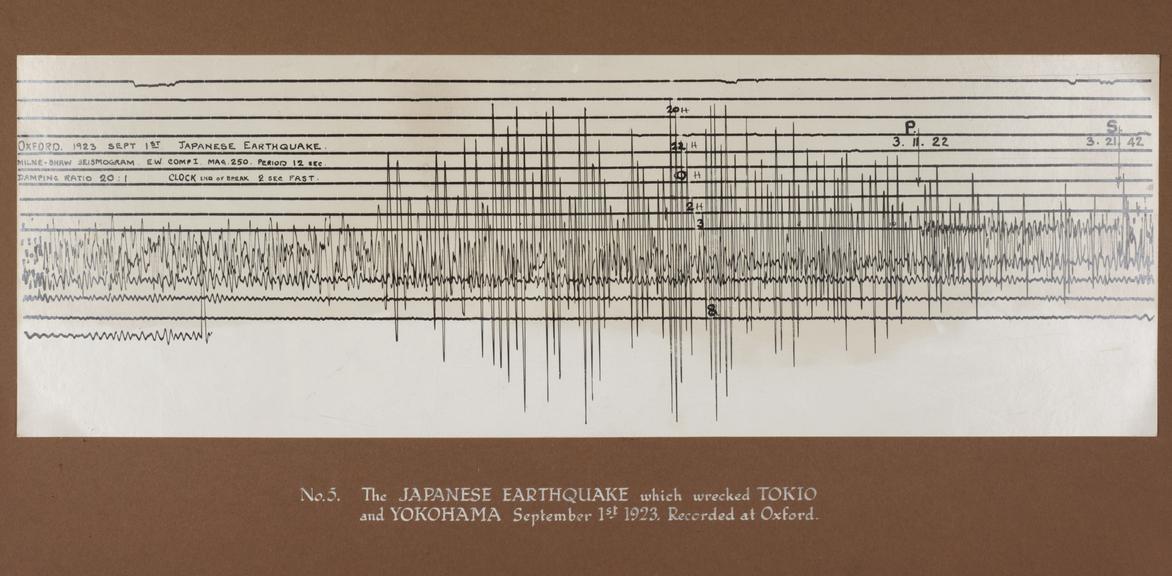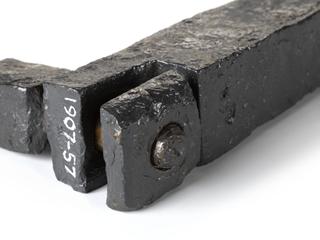
Enlarged seismogram of earthquake in Japan, 1 September 1923
- maker:
- John Johnson Shaw

Photoenlargement of a seismogram of an earthquake affecting Tokyo and Yokohama, Japan, now known as the Great Kantō earthquake, recorded on a Milne-Shaw seismograph at Oxford, England, 1 September 1923. Mounted on display board with caption: ‘No.5. The JAPANESE EARTHQUAKE which wrecked TOKIO and YOKOHAMA September 1st 1923. Recorded at Oxford.’
The Great Kantō earthquake, now estimated by scientists to have had a magnitude of between 7.9 and 8.2 on the Richter scale, caused major devastation in Tokyo, Yokohama and surrounding areas. More than 100,000 people are believed to have been killed, both by collapsing buildings and by fires which were exacerbated by typhoon winds. The event continues to be commemorated annually on 1 September through ‘Disaster Prevention Day’.
Milne-Shaw seismographs were amongst several designs of mechanical, pendulum-based seismograph available in the early 1900s that could detect the vibrations from distant earthquakes. They were modified versions of a device originally designed by seismologist John Milne around 1895, but incorporating a system of electromagnetic damping (to prevent the horizontal pendulum acquiring its own swing) and providing records of greater magnification. These modifications were designed by John Johnson Shaw, a seismology enthusiast who built the instruments himself for despatch to observatories and stations around the world.
Analysing the arrival times different types of earthquake waves enabled geophysicists to locate earthquake epicentres, and also to infer the interior structure of the earth.
Details
- Category:
- Geophysics
- Object Number:
- 1926-664
- Materials:
- paper (fibre product)
- type:
- seismogram
- credit:
- Shaw, John Johnson



